Arousal Cream promotes blood flow to the applied area to improve sensitivity and rates of orgasm: it does not produce an orgasm. If not completely absorbed, it may cause irritation with your partner.
Arousal Cream is formulated to act locally so side effects are minimal, but may include skin irritation, headache, dizziness, and restlessness. However, possible side effects include but are not limited to those of each of Arousal Cream’s components. The side effects of these compounds in combination have not been studied.
Call your health care provider immediately if you are experiencing any signs of an allergic reaction: skin rash, itching or hives, swelling of the face, lips, or tongue, blue tint to skin, chest tightness, pain, difficulty breathing, wheezing, dizziness, red, swollen painful area on the leg.
Aminophylline
Adverse GI reactions can be either a local irritant effect on the gastric mucosa or a centrally mediated effect. Transient caffeine-like adverse reactions, such as nausea and vomiting, can occur especially during initiation of theophylline. Initiate theophylline at a low dose and slowly titrate to decrease the occurrence of these reactions. These reactions may persist in a small percentage of patients (less than 3% pediatrics and less than 10% adults). A reduction in dosage may eliminate caffeine-like adverse reactions, but if they continue or become severe, theophylline may have to be discontinued. Diarrhea has also been reported as an adverse reaction in patients with therapeutic serum concentrations of theophylline. Nausea/vomiting and abdominal pain may be caused by gastroesophageal reflux, and this effect is more likely to occur if the patient is lying down. Children 2 years old and under, the elderly, and debilitated patients are more likely to suffer from this effect. Other GI effects include abdominal cramps, anorexia, and possible hematemesis. Local irritation can be minimized by taking the oral drug before or after meals, with a full glass of water or milk, or with antacids. Both adverse GI and CNS effects can be minimized if the dose is titrated over a period of 1 week. Repetitive vomiting may indicate theophylline toxicity and should be investigated. In studies evaluating signs and symptoms of theophylline overdose, vomiting was reported in 73% to 93% of patients after a large single ingestion (acute overdose) and 30% to 61% of patients after multiple excessive doses (chronic overdose).
Central nervous system (CNS) reactions associated with theophylline are generally mild when the peak serum concentrations are less than 20 mcg/mL and mainly consist of transient caffeine-like adverse effects such as headache, insomnia, anxiety, agitation, dizziness, and hyperactivity. Transient caffeine-like adverse reactions occur in about 50% of patients when theophylline therapy is initiated at doses higher than the recommended initial doses (e.g., greater than 300 mg/day in adults and greater than 12 mg/kg/day in children beyond 1 year of age). During the initiation of theophylline therapy, caffeine-like adverse effects may transiently alter patient behavior, especially in school-age children, but this response rarely persists. To minimize the occurrence of the caffeine-like adverse effects, initiate theophylline at a low dose, and slowly titrate. These reactions may persist in a small percentage of patients (less than 3% pediatrics and less than 10% adults), even at peak serum theophylline concentrations within the therapeutic range (i.e., 10 to 20 mcg/mL). A reduction in dosage may eliminate caffeine-like adverse reactions, but if they continue or become severe, theophylline may have to be discontinued. Irritability, restlessness, and tremor have also been reported in patients with theophylline serum concentrations less than 20 mcg/mL. When peak serum theophylline concentrations exceed 20 mcg/mL, theophylline produces a wide range of adverse reactions including intractable seizures which can be lethal. Serum theophylline concentrations greater than 30 mcg/mL have also resulted in nervousness, tremors, and disorientation. There have been a few isolated reports of seizures at serum theophylline concentrations less than 20 mcg/mL in patients with an underlying neurological disease or elderly patients. The occurrence of seizures in elderly patients with serum theophylline concentrations less than 20 mcg/mL may be secondary to decreased protein binding resulting in a larger proportion of the total serum theophylline concentration in the pharmacologically active unbound form. CNS reactions are more likely to occur in children than in adults and are also more likely following rapid IV administration or in patients with excessive theophylline serum concentrations. Serious reactions can occur without antecedent minor symptoms.
Theophylline is a weak diuretic and inotrope, and can cause a mild diuresis.
Hypercalcemia has been reported in a patient with hyperthyroid disease at therapeutic theophylline concentrations.
Hypersensitivity and dermatologic reactions reported with theophylline at concentrations less than 20 mcg/mL include anaphylactic reaction, anaphylactoid reactions, pruritus, rash, and urticaria. Severe allergic skin reactions, such as exfoliative dermatitis, can develop rarely after systemic administration of aminophylline in patients previously sensitized to ethylenediamine via topical administration of an ethylenediamine-containing product. Urticaria or contact dermatitis can develop in individuals who physically handle aminophylline from a hypersensitivity to the ethylenediamine salt.
Theophylline can affect the cardiovascular system. It decreases peripheral resistance, increases cardiac output, and causes a central vagal effect. Palpitations, sinus bradycardia, extrasystoles, hypotension, ventricular tachycardia, premature ventricular contractions (PVCs), and cardiac arrest have been reported. Although cardiovascular effects are generally mild and transient, serious reactions, such as ventricular arrhythmias, can develop without warning. Patients should be carefully monitored.
Theophylline toxicity appears to occur at lower serum concentrations after chronic overmedication than after acute overdose. Also, acute overdose patients are more likely to exhibit hypotension, hypokalemia, and/or metabolic acidosis than are patients receiving chronic overmedication. Patients suffering from chronic overmedication can develop seizures and serious arrhythmias with serum concentrations of 28 to 70 mcg/mL. Cardiac arrhythmias include atrial fibrillation or atrial flutter, multifocal atrial tachycardia, sinus tachycardia, supraventricular tachycardia (SVT), premature ventricular contractions (PVCs), and other ventricular arrhythmias with hemodynamic instability. In studies evaluating signs and symptoms of theophylline overdose, sinus tachycardia was the most common cardiac symptom occurring in 86% to 100% of patients after large single ingestions (acute overdose) and 62% to 100% of patients after multiple excessive doses (chronic overdose). Multifocal atrial tachycardia and atrial flutter have been reported at serum concentrations 15 mcg/mL or more in patients with hypoxia secondary to COPD.
Theophylline is a pyridoxine antagonist and may lead to vitamin B6 deficiency. Supplementation with vitamin B6 may be beneficial in preventing depletion and reducing adverse reactions. Monitor patients during extended therapy.
Rhabdomyolysis is a manifestation of theophylline toxicity and has been reported in studies where the theophylline concentrations were greater than 30 mcg/mL.
Hyperglycemia is a manifestation of theophylline toxicity and has been reported in studies where the theophylline concentrations were greater than 30 mcg/mL.
Ergoloid Mesylate
Gastrointestinal adverse effects which may frequently occur during therapy with ergoloid mesylates and include nausea, vomiting, stomach cramps, decreased appetite (anorexia), and transient dyspepsia. Sublingual irritation (soreness under the tongue) has been reported following administration of sublingual tablets.
At therapeutic doses, ergoloid mesylates (dihydrogenated ergot alkaloids) have few side effects and lack the vasoconstrictor properties of the natural ergot alkaloids. However, ergoloid mesylates have been associated with cardiovascular adverse effects including sinus bradycardia, hypotension, and orthostatic hypotension. Dizziness, headache, or syncope may accompany hypotensive effects. Blood pressure and heart rate should be monitored prior to initiating therapy and at periodic intervals during therapy. If significant bradycardia or hypotension occurs, ergoloid mesylates should be discontinued.
According to the manufacturer, therapeutic doses of ergoloid mesylates (dihydrogenated ergot alkaloids) have few side effects and lack certain properties of the natural ergot alkaloids. However, blurred vision, nasal congestion, rash (unspecified), and flushing may occur.
Pentoxifylline
Pentoxifylline therapy is associated with adverse effects involving the GI tract and the central nervous system. Adverse events are dose-related and if they do occur a dosage reduction should be considered. If adverse events continue at a reduced dosage, pentoxifylline therapy should be discontinued.
The following gastrointestinal-related adverse reactions were reported with pentoxifylline extended-release tablets during controlled clinical trials compared to placebo: nausea (2.2% vs. 0.8%), vomiting (1.2% vs. 0%), and belching/flatulence/bloating (0.6% vs. 0%). Anorexia, cholecystitis, constipation, and xerostomia/thirst have been reported spontaneously since marketing or occurred in other clinical trials with an incidence of less than 1%; the causal relationship was uncertain.
Anxiety, confusion, depression, seizures, and aseptic meningitis have been reported spontaneously since pentoxifylline marketing or occurred in other clinical trials with an incidence of less than 1%; the causal relationship was uncertain.
Angina/ chest pain (unspecified) was reported at an incidence of 0.3% in pentoxifylline-treated patients compared to 0% of placebo-treated patients in clinical trials. Dyspnea, edema, and hypotension were reported spontaneously since marketing or occurred in other clinical trials with an incidence of less than 1%; the causal relationship was uncertain. Arrhythmia exacerbation and sinus tachycardia have been reported rarely during post-marketing experience; a causal relationship has not been established.
Epistaxis, influenza-like symptoms, laryngitis, and nasal congestion have been reported spontaneously since marketing of pentoxifylline or occurred in other clinical trials with an incidence of less than 1%; the causal relationship was uncertain.
Angioedema has been reported spontaneously during post-marketing of pentoxifylline or in other clinical trials with an incidence of less than 1%; the causal relationship was uncertain. In addition, anaphylactoid reactions, including anaphylactic shock, have been reported rarely; a causal relationship has not been established. Pentoxifylline should be discontinued at the first sign of an anaphylactic reaction.
Hepatitis, jaundice, cholestasis, and elevated hepatic enzymes have been reported rarely during post-marketing experience with pentoxifylline; a causal relationship has not been established.
Leukopenia has been reported spontaneously since marketing of pentoxifylline or occurred in other clinical trials with an incidence of less than 1%; the causal relationship was uncertain. Decreased serum fibrinogen, pancytopenia, aplastic anemia, leukemia, purpura, and thrombocytopenia have been reported rarely during post-marketing experience with pentoxifylline; a causal relationship has not been established.
Brittle fingernails, pruritus, rash (unspecified), and urticaria have been reported spontaneously since marketing pentoxifylline or in other clinical trials with an incidence of less than 1%; the causal relationship was uncertain.
Blurred vision, conjunctivitis, earache, and scotomata have been reported spontaneously since marketing of pentoxifylline or in other clinical trials with an incidence of less than 1%; the causal relationship was uncertain.
Bad taste, excessive salivation (hypersalivation), malaise, sore throat/swollen neck glands, and weight change (e.g., weight gain or weight loss) have been reported spontaneously since marketing of pentoxifylline or occurred in other clinical trials with an incidence of less than 1%; the causal relationship was uncertain.
Sildenafil
Toxicity is one of the adverse effects that may be experienced in individuals on sildenafil therapy. The risk of developing toxic effects is especially higher in the presence of hepatic or renal disease, or in individuals on concurrent nitrate therapy. The toxic effects typically present as visual or cardiovascular disturbances. Other adverse reactions that may occur while on sildenafil therapy are tendon rupture, exfoliative dermatitis, hearing loss, seizures, and gastritis, among others.
Arginine
During clinical trials of arginine injection (R-Gene 10), one patient developed a maculopapular rash with reddening and swelling of the hands and face. The rash subsided after the infusion was terminated and 50 mg of diphenhydramine was administered. Hypersensitivity reactions, including anaphylactoid reactions, have been reported during post-market surveillance of arginine injection. If serious hypersensitivity or anaphylaxis occurs during arginine therapy, discontinue the infusion and initiate appropriate medical therapy.
Nausea and vomiting were reported in approximately 3% of patients during clinical trials of arginine injection. Excessive rates of infusion may cause these adverse events; consider decreasing infusion rate if these symptoms develop. When dosing arginine for diagnostic purposes, inadequate dosing or prolongation of the infusion period may diminish the stimulus to the pituitary and nullify the test.
Flushing and headache were reported in approximately 3% of patients during clinical trials of arginine injection. Excessive rates of infusion may cause flushing; consider decreasing infusion rate if these symptoms develop. When dosing arginine for diagnostic purposes, inadequate dosing or prolongation of the infusion period may diminish the stimulus to the
pituitary and nullify the test.
During clinical trials of arginine injection, thrombocytopenia was reported in one patient (decrease in platelet count from 150,000 to 60,000).
Metabolic acidosis and hyperventilation may occur with an overdosage of arginine injection. Ensure the appropriate dose is being administered. In overdosages in pediatric patients, cerebral edema and death have been reported. In a review of adverse events reported to the FDA’s Adverse Event Reporting System (AERS), 33 reports were identified. most of which were pediatric patients. The acidosis and base deficit will usually self-compensate and return to normal following cessation of the infusion. If the acidosis persists, however, the deficit should be determined and an appropriate dose of an alkalinizing agent, such as bicarbonate, administered.
Hematuria has been reported in post-marketing reports of arginine injection. Some cases occurred 1—2 days after administration of arginine.
Extravasation causing a third-degree chemical burn (skin necrosis) requiring surgical intervention was in a 17 year old patient during post-market surveillance of arginine injection. An injection site reaction consisting of local venous irritation occurred in 3% of patients in clinical trials. Excessive rates of infusion may cause injection site reaction or skin irritation; consider decreasing infusion rate if local irritation develops. When dosing arginine for diagnostic purposes, inadequate dosing or prolongation of the infusion period may diminish the stimulus to the pituitary and nullify the test.
Paresthesias were reported in approximately 3% of patients during clinical trials of arginine injection. Lethargy has also been reported with arginine administration.
Arginine is a precursor of nitric oxide and accumulation of large amounts of excess arginine could lead to nitric oxide overproduction and result in vasodilation and hypotension. If hypotension is noted, reduction in arginine administration should be considered.
Testosterone
Male patients can experience feminization during prolonged therapy with testosterone, which is believed to result from inhibition of gonadotropin secretion and conversion of androgens to estrogens. These effects are more pronounced in male patients with concurrent hepatic disease and include mastalgia and gynecomastia. In clinical evaluation of testosterone gel, gynecomastia (Testim: 1%; Androgel: 1—3%) and mastalgia (Androgel: 1—3%) were reported. Mastalgia and increased blood testosterone were reported in less than 1% of patients taking Axiron. Feminizing effects of testosterone are generally reversible. During exogenous administration of androgens, endogenous testosterone release is inhibited through feedback inhibition of pituitary luteinizing hormone (LH). At large doses of exogenous androgens, spermatogenesis inhibition may occur through feedback inhibition of pituitary follicle stimulating hormone (FSH). Similar to other testosterone therapies, decreased serum testosterone and oligospermia have been reported during post approval surveillance of testosterone topical gel.
Testosterone therapy can produce libido decrease or libido increase. In clinical evaluation of testosterone gel (Androgel), libido decrease was reported in 1—3% of patients. Priapism and excessive sexual stimulation, more common in geriatric males, are generally the effect of excessive testosterone dosage. In 205 patients receiving testosterone gel (Testim 50 or 100 mg daily), spontaneous penile erection (1%) was reported. During post approval experience with testosterone topical gel (Fortesta), priapism as well as impotence (erectile dysfunction) were reported.
Prostatic hypertrophy may develop during prolonged therapy with testosterone and these events are more likely to occur in elderly male patients. In 205 patients receiving testosterone gel (Testim 50 or 100 mg daily), benign prostatic hyperplasia, BPH was reported in 1% of patients. Clinical trials for testosterone patch (Androderm) include reports of unspecified prostate abnormalities in 5% of patients. Prostate neoplasm was reported in fewer than 1% of patients taking Axiron. In addition, increases in serum PSA concentrations have been reported in clinical trials for testosterone topical solution (Axiron: 1—4%), topical gel and (Fortesta: 1.3%). In a 180 Day, Phase 3 study of testosterone gel (Androgel), prostate disorder (3—5%) including enlarged prostate, BPH, and elevated PSA were reported; testis disorder (1.9—3%) including left varicocele and slight testicular sensitivity were also reported. In 162 hypogonadal men receiving testosterone gel (Androgel) during a 3-year open-label extension trial, increases in serum PSA concentrations (defined as >= 2x baseline concentrations or any single absolute value >= 6 ng/ml) were seen in approximately 18% of patients (n = 29). The majority of these increases were seen in the first year of therapy (23/29 or 79%). Four patients had a single value >= 6 ng/ml: 2 of these patients had prostate cancer detected upon biopsy. In the same study population, enlarged prostate and urinary symptoms including nocturia, urinary hesitancy, urinary incontinence, urinary retention, urinary urgency and weak urinary stream were also reported. Finally, 1 patient reported prostate disorder requiring a transurethral resection of the prostate (TURP) considered possibly related to treatment by investigators. Dysuria and hematuria have also been reported during postmarketing surveillance of testosterone therapy. Hematuria (< 3%), prostatitis (< 3%), and polyuria (< 3%) have been reported in patients receiving Androderm. In patients receiving testosterone therapy, surveillance for prostate cancer (as a secondary malignancy) should be consistent with current practices for eugonadal men. Signs of acute epididymitis (e.g., pyrexia, pain in the inguinal region) and/or urinary urgency should prompt withdrawal of the drug and reevaluation of dosage.
When androgens are given to females, virilization, manifested by acne, the growth of facial hair or an unwanted excess of body hair (hirsutism), enlarged clitoris, reduced breast size, and deepening of the voice, can occur. If testosterone treatment is discontinued when these symptoms first appear, they usually subside. Dermatologic reactions reported post-approval or in < 1% of patients using testosterone gel, regardless of brand, included hirsutism. Prolonged treatment can lead to irreversible masculinity, so the benefit of treatment should be measured against the risk. Disruption of the regular menstrual cycle secondary to testosterone-induced suppression of gonadotropin secretion can lead to amenorrhea or oligomenorrhea. Testosterone is associated with teratogenesis and may cause fetal harm. Exposure of a fetus (male or female) to androgens may result in varying degrees of virilization. Care should be taken to avoid exposure to testosterone during pregnancy, including via transfer of topical forms from male to female partners.
Topical testosterone products are associated with application site skin reactions. In clinical studies with testosterone patch (Androderm), transient mild to moderate erythema was observed at the site of application in the majority of patients at some time during treatment. The overall incidence of application site reactions of any kind was 28% (10 subjects with 13 adverse reactions). Application site adverse events reported include: pruritus (17—37%), burn-like blister reaction under system (12%), erythema (< 7%), exfoliation (< 3%), vesicular rash (6%), allergic contact dermatitis to the system (4%), burning (3%), and induration (3%); general rash (unspecified) (2%) was also reported. Blisters reported during trails sometimes involved bullous rash, skin necrosis, or the development of a skin ulcer. The majority of the lesions were found in cases where the patch was placed over bony prominences or on parts of the body that may have been subject to prolonged pressure during sleep or sitting. Other dermatological reactions at the application site, occurring in <1% of patients include: bullous rash, mechanical irritation, rash (unspecified), and contamination. Chronic skin irritation resulted in 5% of patients discontinuing treatment. Mild skin irritation may be ameliorated by treatment of affected skin with over-the-counter topical hydrocortisone cream applied after transdermal system removal. Additionally, applying a small amount of 0.1% triamcinolone acetonide cream to the skin under the central drug reservoir of the transdermal system has been shown to reduce the incidence and severity of skin irritation. The administration of 0.1% triamcinolone acetonide cream does not significantly alter transdermal absorption of testosterone from the system; ointment triamcinolone formulations should not be used for pretreatment as they may significantly reduce testosterone absorption. Dermatological reactions seen during testosterone topical solution (Axiron) clinical trials include: application site skin irritation (7—8%), erythema (5—7%), and folliculitis (< 1%). Other less common adverse reactions include: general erythema (< 1%) and application site edema and warmth (reported in at least 2 patients). Application site reactions have also been reported for testosterone gel (Fortesta: 16.1%; Androgel: 3—5.6%; Testim: 2—4%). Other dermatological reactions reported during clinical trials with testosterone gel (Androgel) include: xerosis (1.9%), acne (1—8%), and pruritis (1.9%). Contact dermatitis was reported in 2.1% of patients treated with testosterone gel (Androgel 1.62%). All testosterone therapy influences the growth and secretion of the sebaceous glands, which can cause seborrhea and acne indistinguishable from acne vulgaris. Acne vulgaris (> 1%) was reported in a clinical evaluation of testosterone solution (Axiron). Alopecia resembling male pattern baldness has also occurred in patients receiving long-term therapy or excessive testosterone doses. Dermatologic reactions reported post-approval or in < 1% of patients using testosterone gel, regardless of brand, include: acne, allergic dermatitis, diaphoresis, alopecia, erythema, hair discoloration, maculopapular rash, paresthesias, pruritus, rash (unspecified), skin irritation, swelling, and xerosis. During clinical evaluation and post marketing surveillance, hyperhidrosis (1.3%) was reported among patients receiving testosterone undecanoate.
The testosterone buccal mucoadhesive system can cause dental pain, such as gum or mouth irritation (9.2%), a bitter taste in the mouth (dysgeusia, 4.1%), gum pain (3.1%), gum tenderness (3.1%), gum edema (2%), or taste perversion (dysgeusia, 2%). The majority of gum-related adverse events were transient; gum irritation generally resolved in 1—8 days and gum tenderness resolved in 1—14 days. The following adverse events occurred in 1 patient during clinical trials: buccal mucosal roughening, gingivitis, gum blister, nose edema, stinging of lips, and toothache. In clinical trials, 4.1% of patients discontinued treatment due to gum or mouth-related adverse events. Gum examinations were conducted in one study to assess for gingivitis, gum edema, oral lesions, oral ulceration, or leukoplakia with no new or worsening cases of any of these anomalies reported. In two long-term extension trials, the following adverse events occurred in 1 patient each: buccal inflammation, xerostomia, gum redness, stomatitis, taste bitter/ taste perversion (dysgeusia), and toothache. Dysgeusia (reported as taste disorder) was reported in 1% of patients receiving testosterone gel (Testim) and judged possibly, probably, or definitely related to the study drug. However, dysgeusia has not been noted as a side effect with other topical or injectable testosterone products and topically applied and systemic testosterone are not recognized as a common cause of taste disturbance.
Early exposure to pharmaceutical doses of testosterone or other androgens in pre-pubertal males can induce virilism which can be a disadvantage because it is accompanied by premature epiphyseal closure. Once the epiphyses have closed, growth is terminated. Monitoring of skeletal maturation should be undertaken at about 6-month intervals. Once the epiphyses have closed, growth is terminated. Even after discontinuation of testosterone treatment, epiphyseal closure can be enhanced for several months.
Androgen therapy has been associated with retention of sodium, chloride, water, potassium, and inorganic phosphates. Peripheral edema can occur as the result of increased fluid retention (in association with sodium chloride) and may be manifested by weight gain. These effects may be more prominent earlier in androgen therapy. If normal therapeutic testosterone doses are used in the treatment of hypogonadism, only a moderate amount of fluid retention occurs. In the treatment of patients with impaired renal function or congestive heart failure, the fluid retention is of greater significance. Animal models suggest the ability of testosterone to induce blood pressure increases and to alter naturesis thus affecting vasoconstriction and stimulation of the renin-angiotensin-aldosterone system. Therefore, androgens may affect blood pressure; however, the current role of testosterone in blood pressure regulation is not well understood. Hypertension has been reported during clinical evaluation as well as post-approval surveillance of testosterone therapy. In clinical studies, 2.1—3% of patients receiving testosterone gel (Androgel) reported hypertension. Hypertension (1%) as well as decreased diastolic pressure (1%) were reported in trials involving testosterone gel (Testim). Hypertension (>1%) was reported in patients using testosterone topical solution (Axiron). In addition to affecting blood pressure, androgens may affect the prevalence of cardiovascular disease. The possible association between testosterone use and the increased risk of severe cardiovascular events, irrespective of pre-existing cardiac disease, is currently under investigation. An observational study in the U.S. Veteran Affairs health system included adult male patients of an average age of 60 years. Patients (n = 8709) undergoing coronary angiography with a recorded low serum testosterone concentration of < 300 ng/dl were included in the retrospective analysis. Within the larger cohort, testosterone therapy was initiated in 1223 males after a median of 531 days following coronary angiography; 7486 males did not receive testosterone therapy. Three years after coronary angiography, 25.7% of patients receiving testosterone therapy compared to 19.9% of patients not receiving therapy suffered a severe and/or fatal cardiovascular event (myocardial infarction, stroke, death). A second observational study, investigated the incidence of acute non-fatal myocardial infarction (MI) following an initial testosterone prescription in both younger (<= 55 years) and older (>= 65 years) adult males (n = 55,593). The incidence rate of MI occurring within 90 days following the initial testosterone prescription was compared to the incidence rate of MI occurring in the one year leading-up to the first prescription. Among older males, a 2-fold increase in the risk of MI was observed within the 90 day window; among younger males with a pre-existing history of cardiac disease, a 2- to 3-fold increased risk of MI was observed. In contrast, no increased risk was observed in younger males without a history of cardiac disease. In light of these findings, the FDA announced in early 2014 an examination into the possible link between testosterone therapy and severe cardiovascular events. The FDA has NOT concluded that FDA-approved testosterone treatment increases the risk of stroke, MI, or death. However, health care professionals are urged to carefully consider whether the benefits of treatment are likely to exceed the potential risks. The FDA will communicate their final conclusions and recommendations when the evaluation is complete.
Hepatic dysfunction can occur from use of certain androgens; therefore, periodic liver function test monitoring is advised. With use as prescribed, elevated hepatic enzymes are more likely to occur than overt jaundice or other liver dysfunction, which are rare with testosterone use in general. Adverse hepatic effects are more likely with administration 17-alpha-alkylandrogens (e.g., methyltestosterone) or with abuse of such androgenic hormones by athletes, where abuse results in liver changes consistent with fatty liver disease (steatosis) in an estimated 2.4% of individuals, even in the absence of other risk factors for fatty liver. Testosterone should be discontinued if cholestatic jaundice or hepatitis or other adverse liver dysfunction occurs. Peliosis hepatis and hepatic neoplasms occur rarely, but when they do, they are potentially life-threatening.
Headache has been reported in several testosterone therapy trials; incidence rates of headache range from 1—6%, regardless of formulation. Some incidences of mood alterations including emotional lability (< 3%), confusion (1%), depression (1—3%), nervousness (1—3%), anxiety (> 1%), anger (> 1%), asthenia (<1%), hostility (<1%), and mood swings (1%) have also been reported across several testosterone studies. Abnormal dreams (Fortesta: 1.3%) and insomnia (Testim: 1%) have been reported in patients receiving testosterone gel. Hot flashes or flushing (Testim: 1%) and asthenia (Androgel: 1—3%) were also reported for patients receiving testosterone. Diarrhea (3—4%) and vomiting (3—4%) have been reported among patients receiving testosterone solution (Axiron). Diarrhea (< 3%), gastroesophageal reflux disease (< 3%), back pain (6%), chills (< 3%), fatigue (< 3%) have been reported in patients receiving Androderm transdermal patch. Miscellaneous adverse reactions reported post-approval or in < 1% of patients using exogenous testosterone, regardless of formulation include: abdominal pain (cramps), abnormal renal function, appetite stimulation, asthma, dizziness, hyperglycemia, increased lacrimation, malaise, nausea, pain in extremity (musculoskeletal pain), pelvic pain, and vitreous detachment. Other miscellaneous reactions reported during post approval surveillance of testosterone undecenoate include: sudden hearing loss, tinnitus, and myalgia.
Testosterone therapy has induced osteolysis and can exacerbate hypercalcemia. Androgen-induced hypercalcemia occurs especially in immobile patients and those with metastatic carcinoma of the breast. Skeletal adverse reactions reported during post approval surveillance of testosterone undecanoate included osteopenia and osteoporosis.
Testosterone may cause undesirable changes in serum lipid profiles, including hypercholesterolemia or hypertriglyceridemia. Periodic monitoring of lipid profiles may be desirable during treatment. Observational studies in post-menopausal women, bodybuilders, and weightlifters using anabolic steroids have revealed ‘pro-atherogenic’ changes in lipid profiles, including decreases in HDL concentrations and increases in LDL concentrations. Synthetic androgens may produce a greater lowering of the HDL-C:LDL-C ratio than does testosterone. Although the implications of androgen-induced hypercholesterolemia are unclear, caution should be exercised, particularly in patients predisposed to dyslipidemia or atherosclerosis. If lipid changes are significant, dose adjustment of testosterone or lipid lowering drugs or discontinuation of testosterone treatment may be needed; individualize therapy.
Testosterone has a stimulatory effect on the formation of erythropoietin. Increased erythropoiesis, especially in women, can lead to erythrocytosis, secondary polycythemia, and its complications including: dizziness, migraine, tiredness (fatigue), unusual bleeding, flushing, or redness of the skin. Patients receiving high doses of testosterone are at risk for polycythemia. In clinical evaluation of testosterone solution (Axiron), increases in red blood cell count (< 1%), hematocrit (4—7%), and hemoglobin (> 1%) were reported. In studies of testosterone gel (Testim), patients receiving a 100 mg dose had clinically notable increases in both hematocrit (2.8%) and hemoglobin (2.3%). Likewise, 2.1% of patients treated with testosterone gel (Androgel 1.62%) reported increased hematocrit or hemoglobin. In intranasal testosterone gel analysis, 4 of 306 exposed patients developed a hematocrit level > 55% (baseline: 48—51%; did not exceed 58%). Therefore, periodic hemoglobin and hematocrit determinations should be considered in patients receiving long-term testosterone therapy. In general, testosterone therapy has been associated with suppression of clotting factors II, V, VII, and X and bleeding in patients on concomitant anticoagulant therapy. GI bleeding was reported in 2% of patients receiving testosterone patch (Androderm) therapy during clinical evaluation. Hemarthrosis (< 3%) has also been reported Androderm. During postmarketing surveillance of testosterone gel (Testim), prolonged aPPT and PT and prolonged bleeding time were reported. Anemia was reported in 2.5% of patients receiving testosterone gel (Androgel) during clinical evaluation. An increased risk of deep vein thrombosis (DVT) and acute pulmonary embolism (PE) is associated with testosterone use; events have been reported during post-marketing surveillance. Discontinue treatment with testosterone in patients reporting pain, swelling, warmth, and redness in the leg (DVT) or chest pain, trouble breathing, and cough (PE) and examine for possible VTE. Other miscellaneous reactions reported during post approval surveillance of testosterone undecenoate include: thrombocytopenia, hyperparathyroidism, and hypoglycemia.
Intramuscular administration of anabolic steroids can cause inflammation, erythema, urticaria, post injection pain, induration and furunculosis. Inflammation and pain at the site of insertion of testosterone implant pellets is possible. Testosterone pellets may also slough out from the insertion site, which is usually secondary to superficial implantation or aseptic technique. Patients should be observed for any signs of an injection site reaction.
Few cases of anaphylactoid reactions have been reported in association with oral and injectable testosterone therapy. Administration of testosterone undecanoate has been associated with cases of pulmonary embolism, specifically serious pulmonary oil microembolism (POME) reactions as well anaphylactoid reactions. Reported cases of POME reactions occurred during or immediately after a 1000 mg intramuscular injection of testosterone undecanoate. Symptoms included: cough, urge to cough, dyspnea, hyperhidrosis, throat tightening (acute bronchospasm), chest pain, dizziness, and syncope. Most cases lasted a few minutes and resolved with supportive measures; however, some lasted up to several hours and some required emergency care and/or hospitalization. In addition to POME reactions, episodes of anaphylaxis, including life-threatening reactions, have also been reported following the intramuscular injection of testosterone undecanoate. Overall, 9 POME events in 8 patients and 2 events of anaphylaxis among 3556 patients treated with testosterone undecanoate were reported in 18 clinical trials; cases of both POME and anaphylaxis were also reported post-approval. Cases have occurred following initial injection as well as during later injections in the normal course of treatment. After every administration, monitor patient for 30 minutes and provide appropriate medical treatment in the event of serious POME or anaphylactoid reactions. Due to the risk of serious POME and anaphylaxis reactions, testosterone undecanoate (Aveed) is only available through a restricted program called the Aveed REMS Program. Clinicians wanting to prescribe Aveed, must be certified with the REMS Program for purposes of ordering or dispensing the product. Healthcare settings must also be certified with the REMS Program and must have the resources to provide emergency medical treatment in cases of serious POME and anaphylaxis. Further information is available at www.AveedREMS.com or call 1—855—755—0494. Transient respiratory reactions including the urge to cough, coughing fits, and respiratory distress immediately after intramuscular injection of testosterone enanthate have been reported during post-marketing surveillance. Care should be taken to ensure slow and deep gluteal muscle injection of testosterone preparations. Nasopharyngitis or pharyngitis (> 1 %) was reported in patients receiving testosterone topical solution (Axiron).
The treatment of hypogonadal men with testosterone may increase the risk of sleep apnea, especially in patients with risk factors for sleep apnea, such as obesity or chronic lung disease.
In clinical evaluation of intranasal testosterone gel, the following nasal adverse reactions were reported among the most common adverse events: nasopharyngitis (3.8—8.7%), rhinorrhea (3.8—7.8%), parosmia (5.8%), epistaxis (3.8—6.5%), nasal irritation or discomfort (3.8—5.9%), nasal scabbing (3.8—5.8%), nasal dryness (4.2%), nasal congestion (3.9%), and procedural pain (4.3%). Although the majority of nasal complaints were mild or moderate in severity, long-term data on nasal safety is limited. Advise patients to report any distressing nasal symptoms; if present, determine the need for further evaluation or continued treatment. Other reported respiratory adverse reactions, include: bronchitis (3.8—4.3%), upper respiratory tract infection (3.8—4.3%), and sinusitis (3.8%).
Call your health care provider immediately if you are experiencing any signs of an allergic reaction: skin rash, itching or hives, swelling of the face, lips, or tongue, blue tint to skin, chest tightness, pain, difficulty breathing, wheezing, dizziness, red, swollen painful area on the leg.

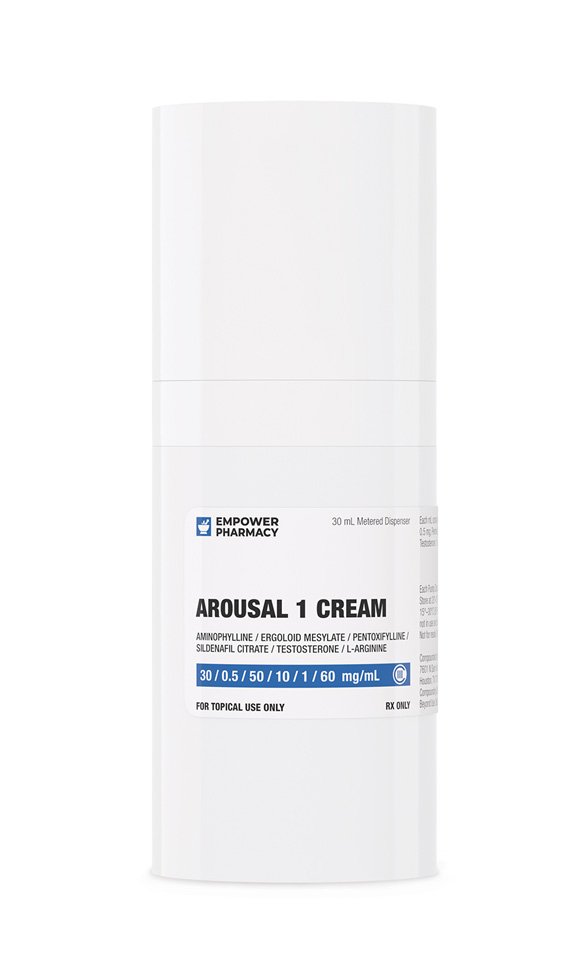
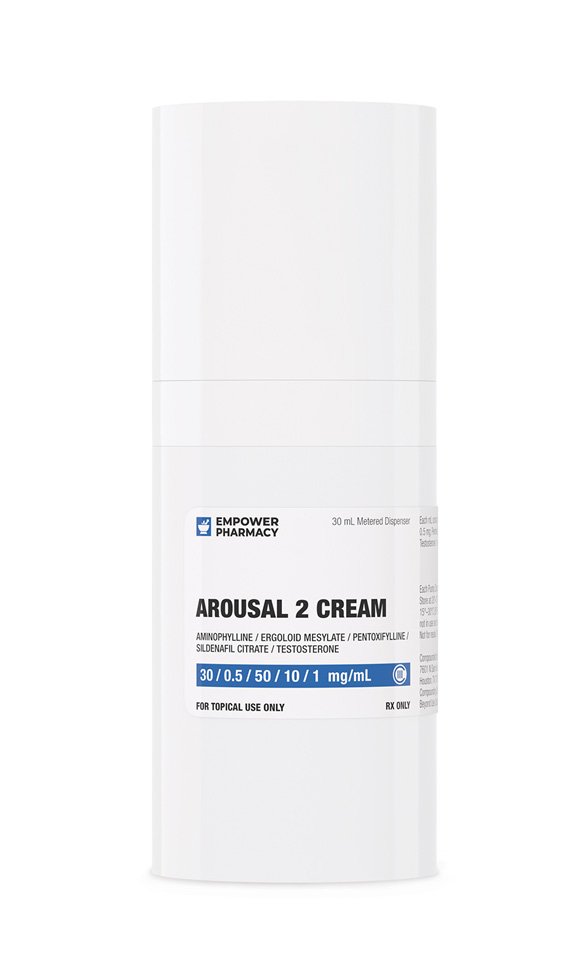
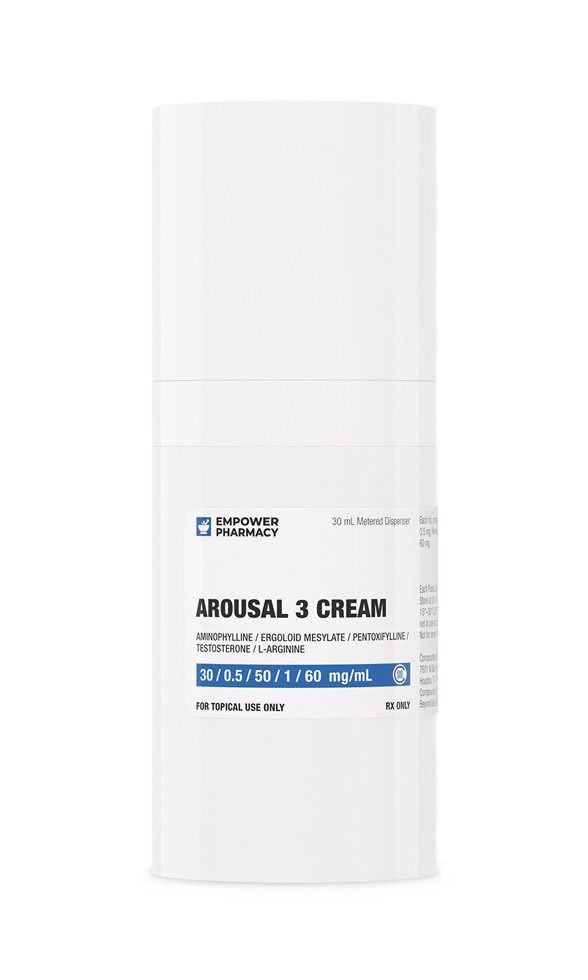
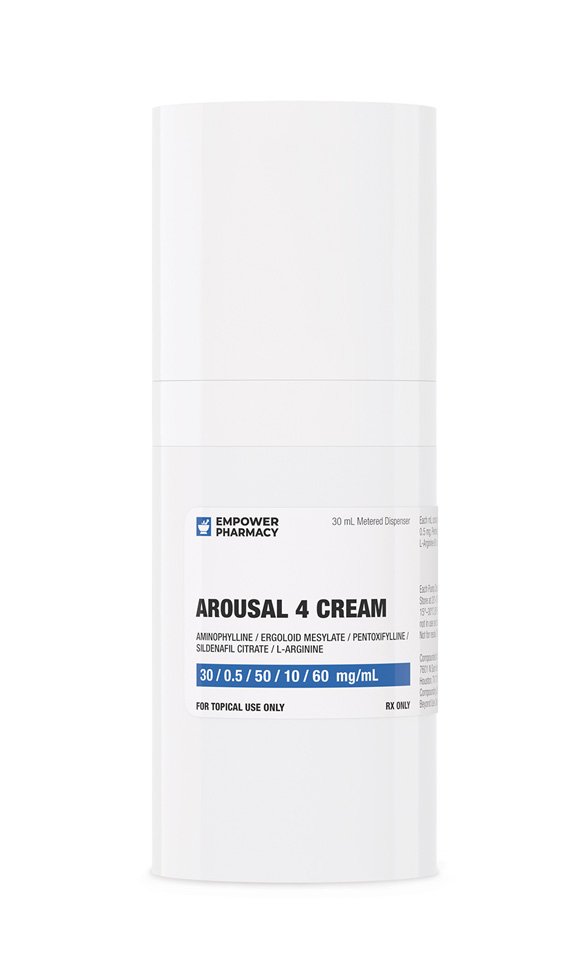
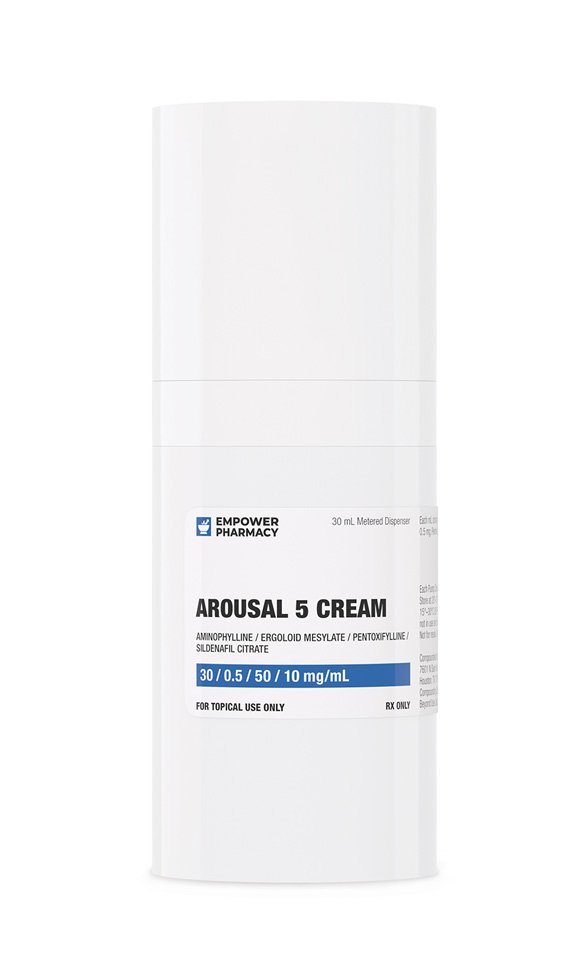
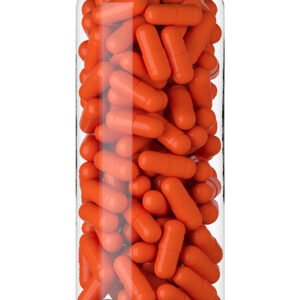
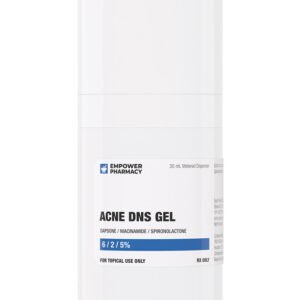
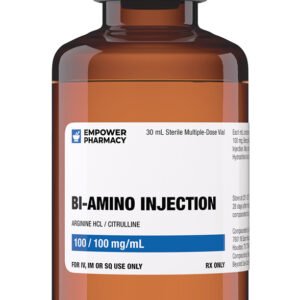

Reviews
There are no reviews yet.